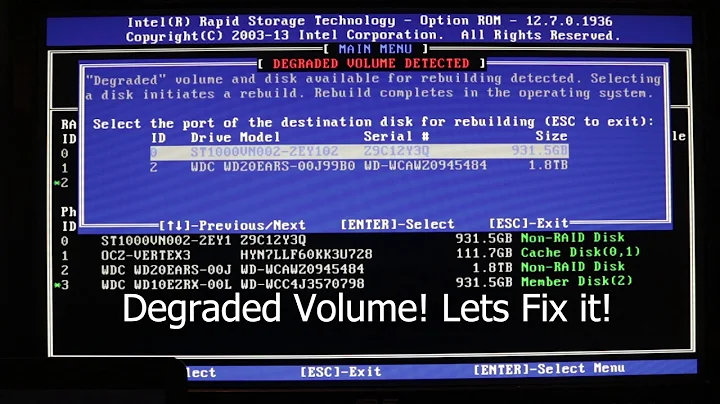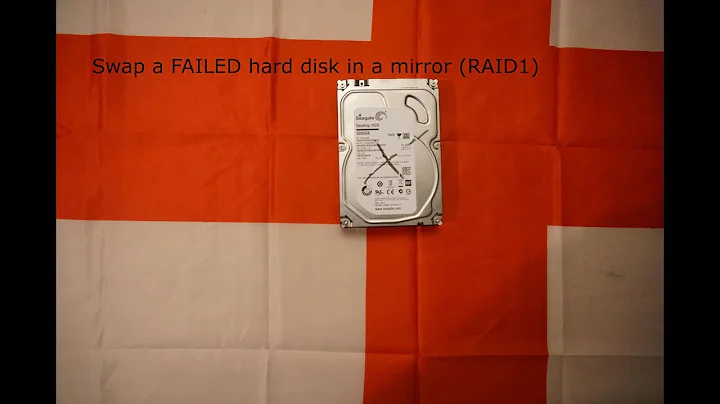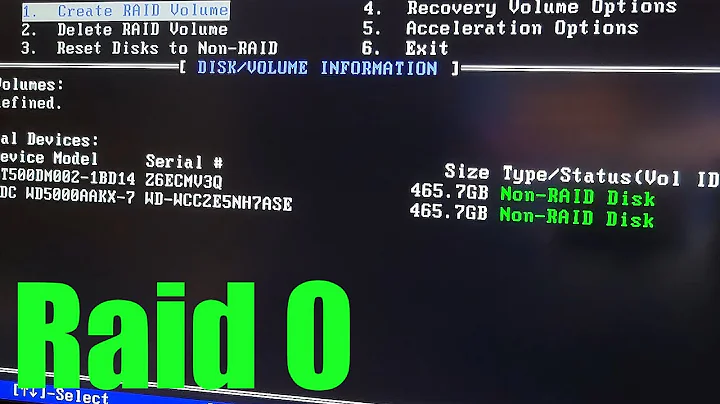How to remove a hard drive from an Intel RST RAID configuration?
17,592
My solution was to do the following, since I didn't care about the having the drive or its data anymore:
- Took the drive out
- Booted Windows and got the (expected) error that my RAID was diminished
- Placed the hard drive in my external adapter
- In the disk management, the drive showed as having a conflict.
- I right-clicked and selected "online" to bring the drive online, which basically gave it a new signature.
I was then able to access the disk normally.
Not sure that it's the best way, but it worked for me.
Related videos on Youtube
Author by
SeanKilleen
A mind at work. Microsoft MVP - Developer Technologies Lead of NUnit docs https://docs.nunit.org Trainer, Speaker, Blogger Interested in working together? https://seankilleen.com/hire/
Updated on September 18, 2022Comments
-
 SeanKilleen almost 2 years
SeanKilleen almost 2 yearsBackground
- I'm on a Windows 8 machine.
- I had 2 x 1 TB HDDs in a RAID1 configuration utilizing the Intel RST software.
- One of the HDDs went bad according to Intel's RST application
- I removed the hard drive, replaced it with a new one, and the RAID1 array built itself, so all is well.
- I need to do an RMA on the hard drive, and Seagate requires that I run a software application on the hard drive to get the failure code as part of the RMA.
The Goal
- I need to run the seagate tool on the hard drive as a separate entity from the Intel RST application
The Problem
- Even in the BIOS after removing the bad drive from the RAID array, it shows up in Intel RST but not in Windows (it shows in disk management as an offline drive that has "the same signature" as the RAID1 array)
- When I plug the drive into another controller on the motherboard (a Marvel controller, not the intel controller), it causes a conflict when booting windows.
The Question
- How can I remove this extra hard drive from the Intel RST application so that I can view it in Windows as a separate disk?
- I don't care about the drive at all; formatting, losing data on it, etc. is no big deal for me.
-
 PatricK over 10 yearsare there options in BIOS/RAID Utility to remove the raid settings on the faulty hdd? Any other SATA ports you can connect this to which is not connected to the RAID (some boards has 2 SATA chipsets)? If you can do, and it shows in BIOS, then good to go into Win7 to run that software.
PatricK over 10 yearsare there options in BIOS/RAID Utility to remove the raid settings on the faulty hdd? Any other SATA ports you can connect this to which is not connected to the RAID (some boards has 2 SATA chipsets)? If you can do, and it shows in BIOS, then good to go into Win7 to run that software. -
 PatricK over 10 yearsmay be unplug your raid drives, leaving the faulty one in, boot with Win8 disk and use
PatricK over 10 yearsmay be unplug your raid drives, leaving the faulty one in, boot with Win8 disk and useDiskparttocleanall partitions on it? then reconnect the raid. Or if BIOS boot options can disable the faulty one in boot list?




